
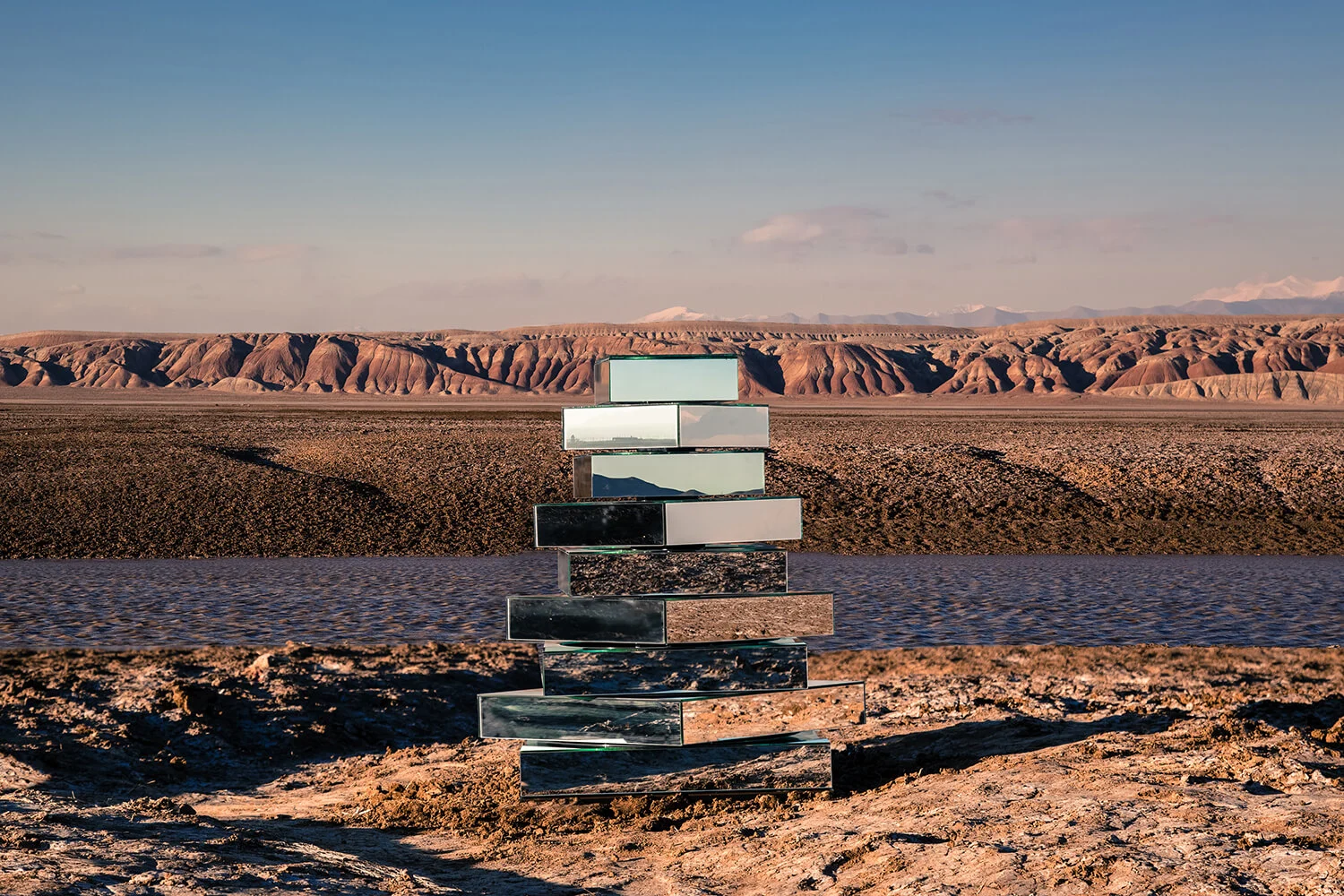
Inspired by the beauty of nature and the power of history, Shirin Abedinirad is best known for her stunning mirror installations, built on sites that range from the Italian city of Treviso to the Central Desert in Iran.
Her works incorporate and blend elements of the natural world with architectural structures and relics from ancient Eastern history — connecting her audiences to the earth as the source of life, as well as to our shared human story. Using strategically placed mirrors, she opens a window through which audiences can connect to their surroundings.
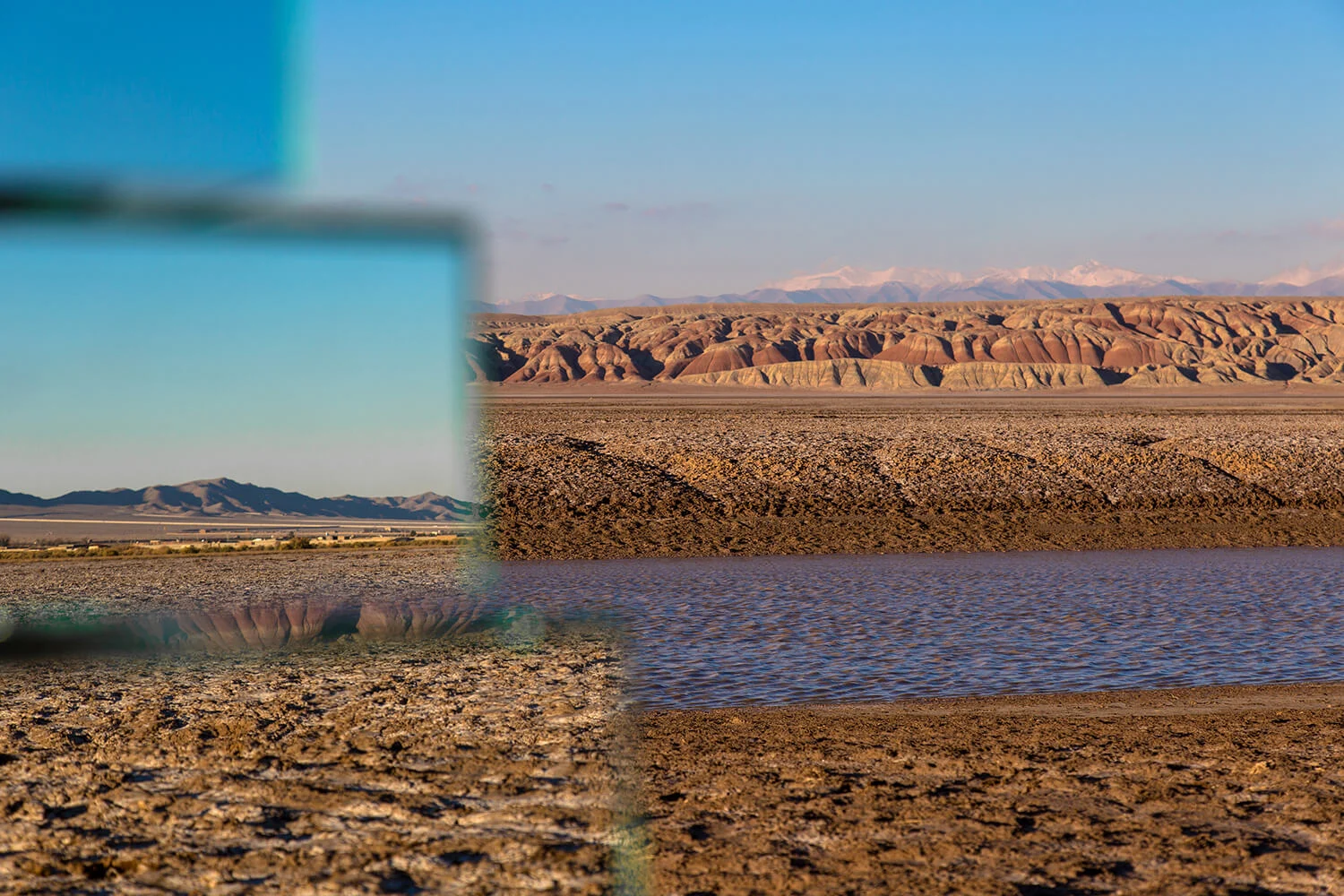
Born in Tabriz in northwest Iran, Shirin’s mother and father encouraged her to paint from a very young age, taking her to art events and entering her work into international competitions. This led her to pursue graphic design at university, but when she felt this wasn’t giving her the creative freedom she needed, Shirin turned her focus to fashion and later to performance pieces, video art and installations.
Shirin also enjoyed a brief career as a model, working for the United Colors of Benetton in Italy, where she visited Fabrica, the company’s research centre. “I went there as a model I decided to come back as an artist,” she says.

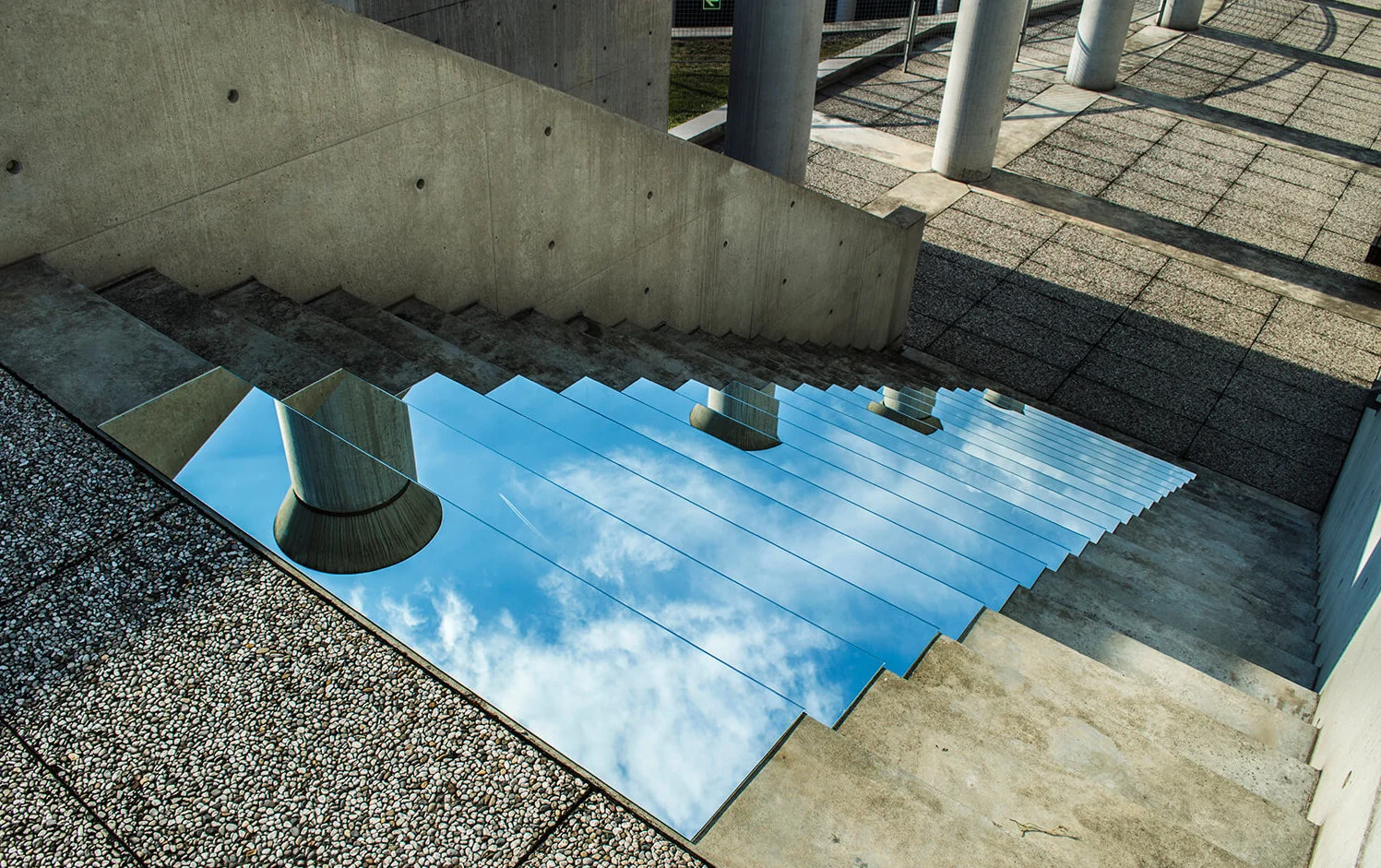
In her earlier works, she often used her own image, particularly in her video work and performance pieces such as Ex Pencils and Sara. Later though she shifted her focus to what she calls “real beauty, the beauty of nature,” influenced by working with the film director Abbas Kiarostami.
This shift in aesthetics was also driven by how she was seen as a young female artist, both in Iran and abroad. She has a horrible memory of a man at a group show in Tehran describing her as “the Marilyn Monroe of the art scene.”

“That really hurt me, it hurt me the way people were looking at me,” she says. “I had the same experience in Italy, I found it hard to work with men because they sometimes have other intentions. I never work with men actually, I find female curators and gallerists to be more serious and more focused on their work.”
She went on to delete all photos of herself from social media in an attempt to escape her image entirely. Later she ran into someone at an event who was amazed that she really was Shirin Abedinirad.
“She thought Shirin Abedinirad was an old woman. This was one of the best moments of my life! I had escaped my image; I was also escaping within my work.”


Confident in herself and comfortable in her own identity, Shirin has a fearless approach to her work, and enjoys avoiding the visual cliches people might expect from a young Middle Eastern woman.
“I don’t use elements which are typically associated with Iran, like the hijab for example,” she says. “If I make art with hijabs and publish them I will become super famous for this. I won’t do it; I won’t use my country in this way.”

Iran’s relatively isolated existence internationally has contributed a great deal to misconception and misunderstanding about the country as well as its people. This manifests in negative stereotyping that can affect the world’s reception to Iranian artists and their work.
The crippling sanctions imposed on the country in an attempt to curb the so-called nuclear threat have also had an disproportionately harsh effect on creatives in Iran. It’s difficult to travel abroad, difficult to secure funding and even difficult to find good-quality paper for books.
“Books are knowledge and people use them to learn, so people are losing touch with reality. The loss of books is one of the worst effects of the sanctions.”

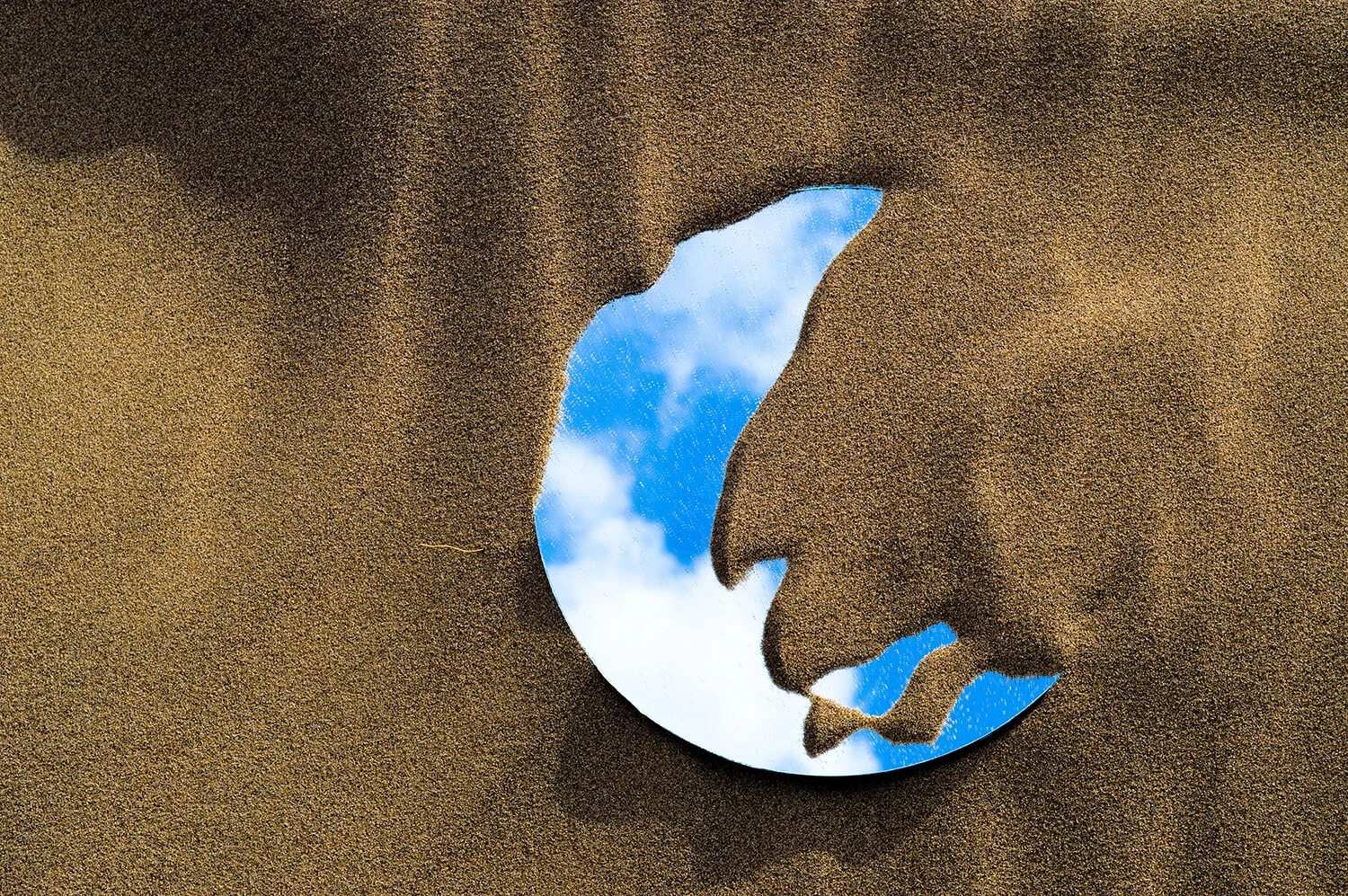
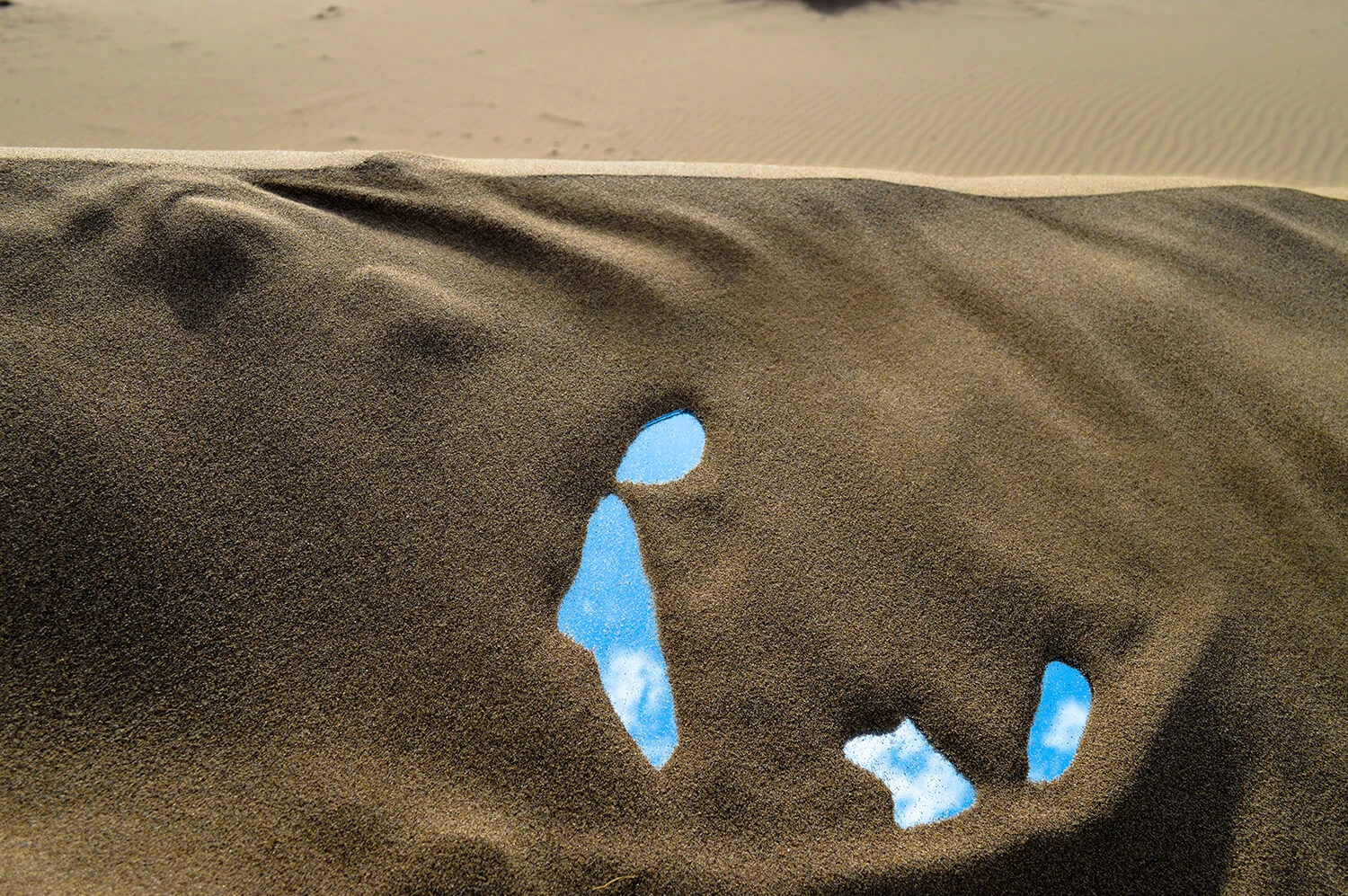
In an admirable attempt to counteract these artistic challenges, Shirin is keen to use her own influence to encourage other young artists in the country, holding workshops and guiding them to the different avenues open to them.
In all this she has a fantastic role model — her own father. “I never felt like a man was imposing the idea that I can’t do something because I am a woman. My father believed in me and made me feel I can do anything.”
Words by Sahar Esfandiari.

